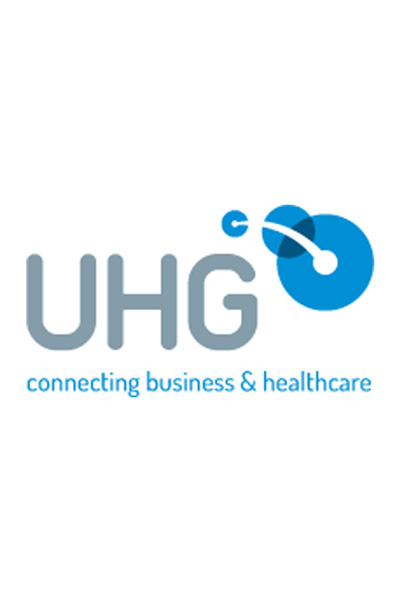Getting outside and enjoying the warmer weather is something Australians do throughout the long summer months and while many come home with sunburn, a few may be coming home with something worse.
This edition of the Waiting Room, provided once again by our colleagues at Unified Healthcare Group, looks at what skin cancer is, its treatment, prevention and how life insurance has a role to play in protecting the skin and health of your clients.
Introduction
Australia has one of the highest incident rates for skin cancer of any country1. despite the fact that it is entirely preventable, with more than 440,000 Australians treated for skin cancer each year2. It is estimated that around two in three people will be diagnosed with skin cancer before the age of 703
The reason for this is that Australia has higher UV index4 values than many other countries, which can lead to sunburn very easily and causes 95% of melanoma5.
What is skin cancer?
Skin cancer is the most common cancer in Australia, mainly caused by exposure to sun light ultraviolet radiation (UVR). Cancer is a group of diseases in which cells are aggressive, invasive and sometimes metastatic (spread to other locations in the body).
Skin cancer is normally divided into two categories: non-melanoma skin cancers (NMSC) and melanoma).
NMSCs are two types: basal cell carcinoma (BCC) and squamous cell carcinoma (SCC). BCC usually develops as a small, round, raised, red, pale or pearly-coloured spot, and it may become ulcerated like a sore that will not heal. SCC appears as a thickened red, scaly spot that may later bleed easily or ulcerate. BCC and SCC develop on areas of the body that are exposed to UVR and easily treated if detected early.
Melanoma is the least common form of skin cancer, but the most deadly. Untreated, melanoma can spread to other parts of the body. Melanoma appears as a new or existing spot, freckle or mole that changes in colour, size or shape. Knowing the ‘ABCs’ or signs of melanoma, can help you catch it early when it is most curable.
A (Asymetry) – Melanomas often have an asymmetrical border, whereas benign moles are usually symmetrical
B (Border irregularity) — Melanomas often have ragged or notched borders, whereas benign moles usually don’t
C (Colour) — Melanomas often contain multiple shades of brown or black within a single mole, whereas benign moles are generally one shade
D (Diameter) — Early melanomas are often 6mm or larger, while benign moles are generally less than 6mm
E (Evolution) — The symmetry, border, colour or diameter of a mole has changed over time
Who is at risk?
Anyone in Australia can develop skin cancer, but risk is increased for people who:
- Are exposed to UVR during childhood and adolescence
- Have repeated exposure to UVR over their lifetime
- Have episodes of severe sunburn
- Have a light complexion
- Are older
- Have a had a previous non-melanoma skin cancer (NMSC)
- Have a personal or family history of melanoma
- Have a large number of moles
- Have unusual types of moles
- Are immunosuppressed (including organ transplant recipients)
Although people with fair skin are at a greater risk of developing skin cancer, anyone can develop skin cancer.
Any form of a tan which has been obtained from exposure to UVR (from natural or artificial sources) increases your chances of premature ageing and developing skin cancer. Fake tanning products do not offer protection against the risk of developing skin cancer.
UVR, which causes sunburn and skin damage, cannot be felt or seen. It is not related to, or indicated by heat, high temperatures, or light, and therefore can be present on cloudy, hazy or breezy days.
You can be harmed by the sun anytime during the day (especially when the UVR is high). In general, the most dangerous times to be out in the sun are 10am – 2pm (or 11am – 3pm during daylight savings), when the UVR level is at its highest.
Fair skinned people can achieve adequate vitamin D levels in summer by exposing the face, arms and hands or the equivalent area of skin to a few minutes of sunlight a day.
Diagnosis & treatment of skin cancer
While tests exist for skin cancer (eg: a biopsy, where a a small sample of tissue is removed for examination under a microscope) the first and easiest way to check for its presence is to look out for skin cancer symptoms such as the appearance of new moles, freckles or marks on the skin or changes in those that already exist. These may also include crusty, non-healing sores or small lumps that are red, pale or pearly in colour.
A regular check with a GP is also useful if someone falls into one of the ‘at risk’ areas outlined above where a biopsy may be performed.
If skin cancer is found it is usually removed and in more advanced cases some surrounding tissue may also be removed to ensure no cancer cells remain. Common treatment techniques include surgery under local anaesthetic, radiation therapy, cryotherapy (freezing the cancer using liquid nitrogen), curettage (scraping) or cautery (burning).
Prevention
Skin cancer is largely preventable, and if caught early, it’s usually curable. Since most skin cancers are linked to sun exposure, it’s important to take precautions when spending time outdoors, no matter what time of year. Too much sun can increase your risk for skin cancer and lead to premature skin aging. Remember, the sun’s UVR rays can reflect off water, sand, concrete and snow, and can reach below the water’s surface
- Avoid direct sunlight during the peak sun hours generally 10 a.m. to 3 p.m., or seek shade during this part of day.
- Wear broad-spectrum sunscreen with an SPF of at least 30 if you’re planning to be in the sun for more than 20 minutes
- Reapply sunscreen frequently, at least every two hours when outdoors, especially if you perspire or you’ve been swimming
- Wear lip balm with an SPF 15 or higher
- Wear a hat and other protective clothing while in the sun. Tightly woven fibres and darker clothing generally provide more protection.
- Wear UV-protective sunglasses
An important part of skin cancer prevention and detection is learning to recognise skin changes that may become cancerous and alerting your doctor to any suspicious moles.
- Perform a thorough skin check regularly, preferably once a month in a brightly lit room in front of a full-length mirror
- Go over your entire body carefully, noting any new or suspicious-looking moles.
- Some find it helpful to record their self-exam results by creating a “body map,” or “mole map.”
- Use a hand mirror to see difficult spots like the top of the scalp or back of the legs.
- Enlist your spouse or a close friend or family member to check hard to see areas
- The ‘ABCDE rules’ area good guide to the common signs of melanoma. Notify your primary care doctor or dermatologist if you find spots that match the descriptions below. Some melanomas don’t fit the ABCDE rules, so be aware of changes on your skin.
Skin Cancer and Trauma Insurance
Skin cancer may be covered under the trauma policies of life insurers dependent on how those insurers define ‘cancer’, ‘skin cancer’ and ‘melanoma’.
Where an insurer does cover skin cancer it is usually within their wider cancer definition but conditions and exclusions may apply. Some insurers may include an additional melanoma or skin cancer definition with additional costs and their own conditions and exclusions.
Making a claim under these policies requires the insured to have a malignant melanoma tumour of at least Clark Level 3 or size equal to or greater than 1.5mm thickness; unless cancer has spread to other organs.
At the same time most policies, under their definitions will exclude non-melanomas cancers originating in the skin unless there is evidence of metastatic spread and those which are less than Clark Level 3 OR less than 1.5mm thickness.
It is here that an adviser can offer value in encouraging clients who are at risk of skin cancer to get a check-up, examining the definitions and exclusions for existing clients and providing some background and assistance to those on claim.
References
- SunSmart, Skin cancer facts and stats, www.sunsmart.com.au/faqs/facts_and_stats
- Cancer Council Australia, Reducing your risk of skin cancer, www.cancercouncil.com.au/60346/cancer-prevention/sun-protection/tips-for-being-be-sunsmart/tips-for-sun-protection/reducing-your-risk-of-skin-cancer/
- SunSmart, Skin cancer facts and stats, www.sunsmart.com.au/faqs/facts_and_stats
- Better Health Channel, Skin cancer – tanning, www.betterhealth.vic.gov.au/bhcv2/bhcarticles.nsf/pages/Skin_cancer_tanning?open
- Australian Institute of Health and Welfare, 2012,Cancer incidence projections – Australia, 2011 to 2020, www.aihw.gov.au/WorkArea/DownloadAsset.aspx?id=10737421440, p.57

The Waiting Room looks at of some of the common medical conditions which advisers may come across when dealing with clients.
Unified Healthcare Group serves Australia’s financial services industry by providing a one-stop solution for all medical requirements associated with life insurance claims and underwriting.
Contact or follow the author: Telephone: 1300 558 583 | Website | Email | LinkedIn













